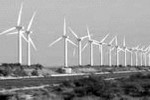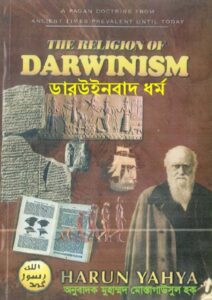
Wind power energy: The renewable generation technology of choice
The Financial Express25.04.2012
M Jalal Hussain
While wind power energy was used by a few countries in the early 19th century, its use picked up momentum in 2011.
A Scottish academic Professor James Blyth undertook wind power experiments in 1887 which was completed in 1892. Charles F Brush produced electricity using wind power machine in the US during 1887-88. The modern wind power industry began in 1979 with the serial production of wind turbine by Danish manufacturers. The Global Wind Energy Council (GWEC) reported that the global wind industry produced just over 41,000 megawatts (MW) of wind power in 2011, bringing the world’s total installed capacity more than 238,000 MW. That represents 21 per cent increase with an increase in the size of the annual global market of just 6 per cent. Today, about 75 countries world-wide have commercial wind power installations, with 22 of them already passing 1.0 gig watts.
Basics of wind power energy: Wind is a form of energy. Winds are caused by the uneven heating of the atmosphere by the sun, the irregularities of the earth’s surface, and rotation of the earth. Wind flow patterns are modified by the earth’s terrain, bodies of water, and vegetative cover. This wind flow, or motion energy, when “harvested” by modern wind turbines, can be used to generate electricity. A wind turbine is a device that converts kinetic energy from the wind into mechanical energy. If the mechanical energy is used to produce electricity, the device may be called wind generator or wind charger.
The terms “wind energy” or “wind power” describe the process by which the wind is used to generate mechanical power or electricity. Wind turbines convert the kinetic energy in the wind into mechanical power. This mechanical power can be used for specific tasks (such as grinding grain or pumping water) or a generator can convert this mechanical power into electricity to power homes, businesses, small industries, schools etc.
Wind power energy in developed and developing countries: “Despite the state of the global economy, wind power continues to be the renewable generation technology of choice”, said Steve Sawyer, GWEC secretary general. “2011 was a tough year; as will be 2012, but the long-term fundamentals of the industry remain very sound. For the second year running, the majority of new installations were outside the OECD, and new markets in Latin America, Africa and Asia are driving market growth.”
According to the recently released GWEC annual market statistics, China consolidated its position as global market leader, with a cumulative capacity of more than 62,000 MW, despite having faced a challenging year. “2011 was not an easy year for the Chinese wind industry,” said Li Junfeng, secretary general of the Chinese Renewable Energy Industry Association. “However, in the end, the industry has come out quite well, not only surviving the year, but also becoming more resilient to the various challenges. In the coming year, the industry will adapt to the government’s new requirements as well as those of the market. We expect the industry will grow stronger and more competitive in the next year.” For India, 2011 installations pushed India’s total capacity to just over 16,000 MW. “India reached another milestone with adding over 3,000 MW of wind power installed in 2011,” said D.V. Giri, chairman of the Indian Wind Turbine Manufacturers Association.
In the EU, 9,616 MW of wind energy capacity were installed in 2011, for a total installed capacity of 93,957 MW-enough to supply 6.3 per cent of the EU’s electricity, according to the European Wind Energy Association (EWEA). Following a year in which industry numbers fell compared to previous record-setting years, the US wind sector bounced back in 2011, with installations of more than 6,800 MW. “American wind energy’s long-term fundamentals are strong,” said AWEA CEO Denise Bode. North of the border in Canada, wind energy enjoyed a record year, surpassing 5,000 MW. “Canada, and in particular Ontario, is emerging as a very competitive destination for wind energy investment globally,” said Chris Forrest, vice president of communications and marketing at the Canadian Wind Energy Association. “Maintaining that position will require continued commitments to aggressive targets for wind energy development and a stable policy framework. As Canada continues to renew its electricity generation resources, wind energy will play an ever-increasing part in delivering reliable, economic and clean electricity.” Latin America also had a good year, growing by a total of more than 1,200 MW, led by Brazil. Brazilian installations were up by half, with the nation adding 587 MW to reach a total of just over 1,500 MW.
Costs and benefits of wind power energy: Wind energy is clean and that is why there is no smog, no acid rains, and fewer greenhouse gas emissions. Wind energy is cost competitive to other fuel sources like the diesel, petrol, other fossil-fuel, natural gas and coal and it is the least expensive of all renewable energy sources. Wind is used as fuel in the process of wind power energy which has no cost like diesel, petrol, coal, etc. Wind energy is renewable, reliable and efficient and it is always generated from the local source of fuel that is the local wind.
Wind power is at least 50 per cent cheaper than solar energy, according to data compiled by Bloomberg. That explains why Google, which consumes 2.26 million megawatt-hours of electricity a year, mainly for data centres that run its billions of Web searches, increasingly prefers wind. Whole Foods Market, Bank of New York Mellon, Starbucks), and Intel are among those companies that made the biggest wind-power purchases in 2010, data compiled by Bloomberg New Energy Finance show. “Wind energy is the lowest-cost form of renewable energy available now in the US,” says Matt Kaplan, associate director of IHS Emerging Energy Research. “In general, wind has become a much more mature form of renewable energy and it’s now seen as almost a mainstream power generation in the US. That wasn’t the case three to four years ago. The industry has made a lot of strides.”
Wind energy is an indigenous, home-grown energy source that helps to diversify the national energy portfolio. Wind energy is free, it does not have to be imported or mined or harvested in any way other than to process through a wind energy system. Wind energy needs one-time capital investment and there is no fuel costs except periodic and normal maintenance costs. Wind power energy is an inexhaustible energy source.
Wind power energy in the context of Bangladesh: The present electricity supply in Bangladesh covers only 59 per cent of its 160-million population. Over and above, electricity and energy supply is unstable and severely interrupted. Nearly 85 per cent of the power generated in the country is from the use of natural gas. The growth of demand and consumption of gas has been outstripping supply and production, leading to severe gas deficits, which are more likely to be worsening in the coming years unless alternative sources of energy and power are ensured. Bangladesh has to import fuels for producing electricity for domestic and commercial usages and spends millions of foreign currency to pay import bills for fuels. It is the high time to diversify the source of energy.
Generating electricity from wind power has become a simple and common technology and 75 countries have already started generating electricity from wind power. Bangladesh, an electricity-deficit country, remains far behind in this respect. Neighboring India produces 16,000 MW electricity annually by using wind power energy. Bangladesh has a vast windy coastal area of about 1500 KM, especially the Cox’s Bazar, Patuakhali (southern coastal area), Mongla and Sundarban areas. The windy weather of these areas is congruous and compatible to run wind turbines to produce wind energy.
If the government actualises wind power energy projects directly or under PPP (Public Private Partnership) in the coastal areas, wind power energy may meet, according to some estimates, about 15 per cent need of electricity of the country. Wind power energy can play a big role in the economy of the country.
The writer is the Group Financial Controller of a private group of industries. [email protected]
https://www.thefinancialexpress-bd.com/print_view.php?news_id=127755









